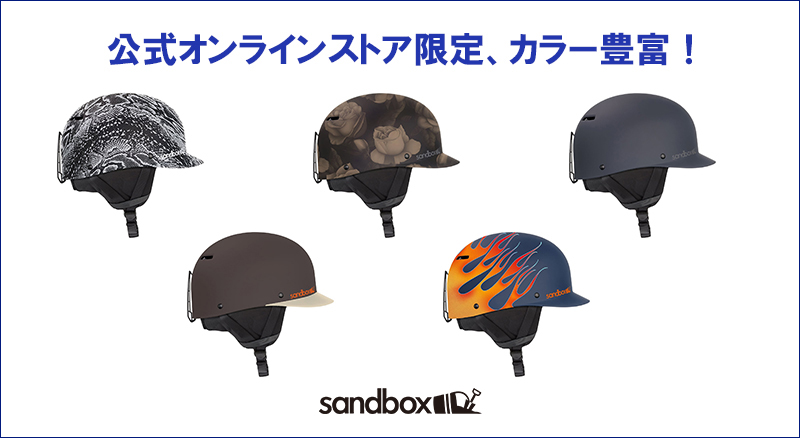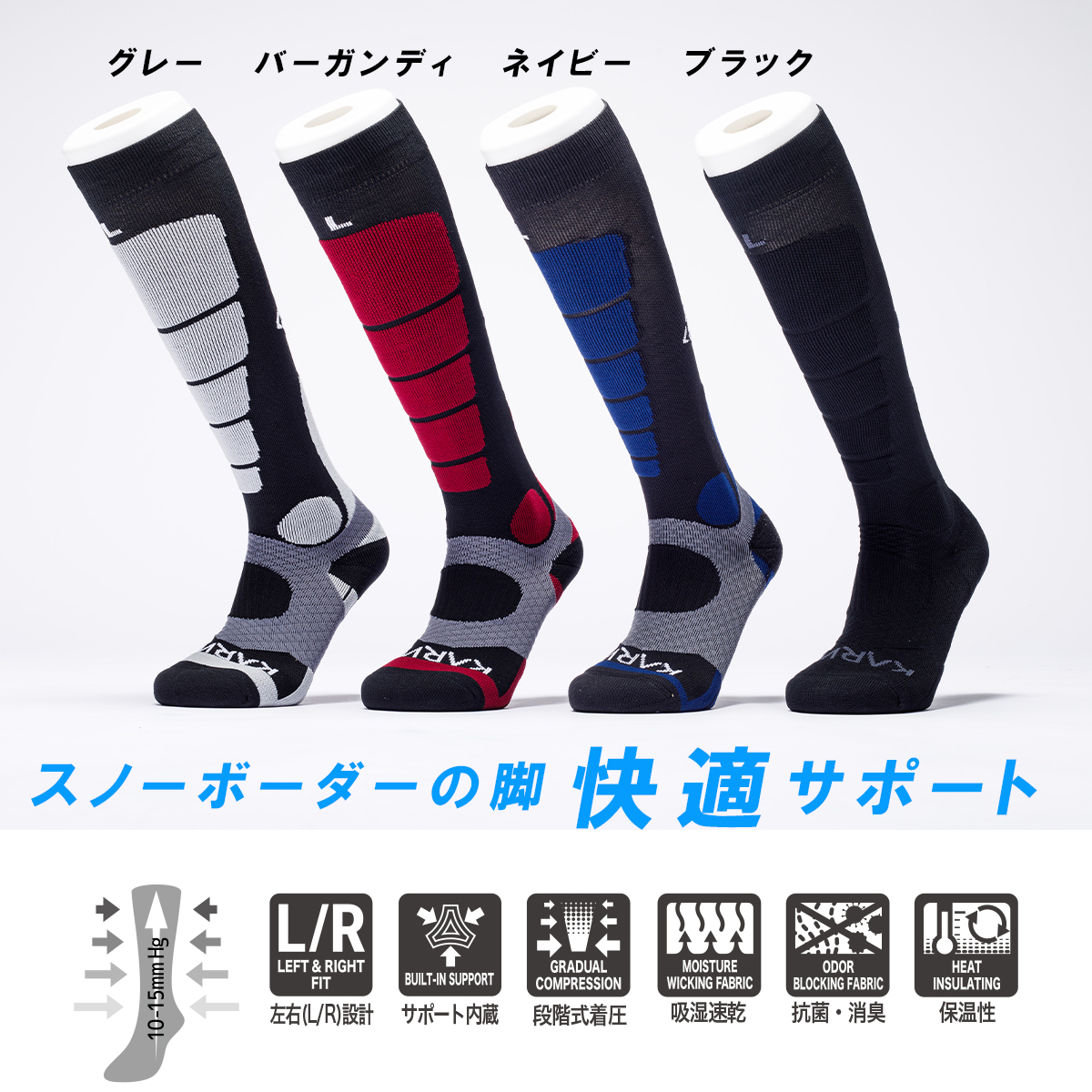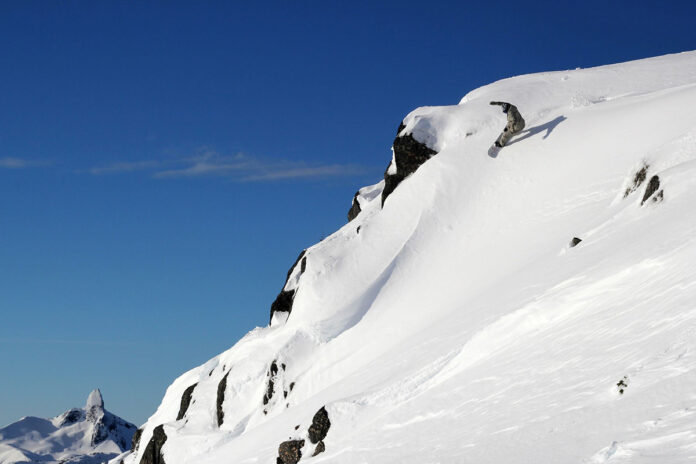
For beginners who are new to snowboarding, the first big achievement will be doing linked turns.
I managed to do one-leg strapped in skating and managed to stand up on the slope, and although I was confused on how to get off the lift, I finally succeeded in my turns!
The snowboarders who finished this stage will gradually be able to snowboard down the intermediate slope/blue runs, but when it comes to the stage of snowboarding down steep slopes, there is a big skill jump needed again.
The moment I stood on top of a steep slope, my legs were jelly and my head was petrified. When I try to initiate my turns, the snowboard goes out of control and I’m not in control. You will be at a loss on how to snowboard down a steep slope.
If you can snowboard down steep slopes, the world of snowboarding will expand at once. You will be able to access almost the entire course of the ski resort, and there is more fun to be had.
Therefore,
(1) clarify the cause of not being able to turn on a steep slope, and
(2) what kind of movement is required to turn on steep slopes. In addition
(3) I would like to introduce two tips to be aware of.
目次
- The reason why you can’t turn on a steep slope is because you shift your center of gravity towards your back leg.
- To make controlled turns on the snowboard, you need to put your weight on the front foot and move the tail of the snowboard.
- Putting the weight on your front foot is when you begin to initiate the turn. When you snowboard down a steep slope, you don’t always keep your weight on your front foot.
- TIPS 1: Let’s make both of our shoulders align parallel to the slope!
- TIPS 2: Learn to use leading movements to steer the forefoot
- What is the preceding action?
- Last advice! What you can do to relax
The reason why you can’t turn on a steep slope is because you shift your center of gravity towards your back leg.
When you try to snowboard down a steep slope, you are too scared to shift your weight forward and your weight gets onto the back leg.
Putting your weight on the back foot never leads to you slowing down.
Rather, moving to the back leg causes the board to accelerate as if it were pushed out. When humans become scared, the natural instinct is to lean backwards. In other words, your weight gets on your back leg and your posture gets worse.
On steep slopes, it speeds up as soon as the nose of the board points downhill, so it is important to slow down and control the board. The goal is not to go fast. It is important to slow down and control the speed to one you’re comfortable with.
Riding on the back leg is the cause of accelerating speed. Also, keep in mind that you can control the board more by riding on your front foot.
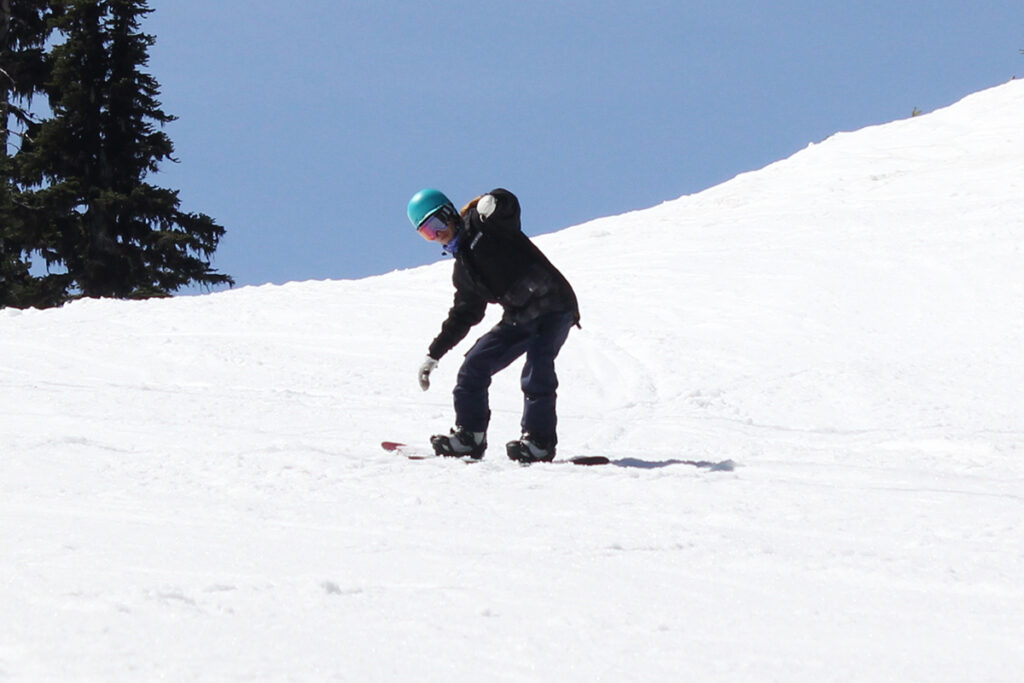
To make controlled turns on the snowboard, you need to put your weight on the front foot and move the tail of the snowboard.
I will explain the board control in more detail.
All you need to do on a steep slope is to adjust the speed. In order to adjust the speed, it is important to put your weight on your front foot and release the pressure on the tail of the snowboard. When you release the pressure on the tail of the snowboard, you can swing the board around and adjust the speed you are going at.
On steep slopes, it is effective to actively ride on the front foot and use skidded turns to adjust the speed you ride at.
Try to swing the tail around your front foot.
Putting the weight on your front foot is when you begin to initiate the turn. When you snowboard down a steep slope, you don’t always keep your weight on your front foot.
When you snowboard down a steep slope, you don’t always keep your weight on your front foot.
When traversing across the slope in between your turns, you can put your weight evenly on both feet, and the ratio of 50%: 50% is OK.
However, if you do not actively put your weight on your front leg as the board gradually points downhill, your weight will naturally shift to your back leg. The reason is that as the board accelerates downhill, if the person on the board does not bend their knees and does not keep their shoulders parallel to the slope, the weight will shift to the back side more and more as the person unconsciously wants to slow down by putting weight on the back leg.
In snowboarding terms, the downhill side is called the fall line, you need to actively put your weight on your front foot toward the fall line.
Specifically, it moves from 50%: 50% to 30% of back leg: 70% of front leg, and when the nose of the snowboard points downhill, it is almost 0% of back legs: 100% of front legs.
If the board moves toward the fall line and the person is scared of going fast, there will be an unconscious effort to lean more onto your back leg.
You need to be conscious of the acceleration and enjoy going down the fall line.
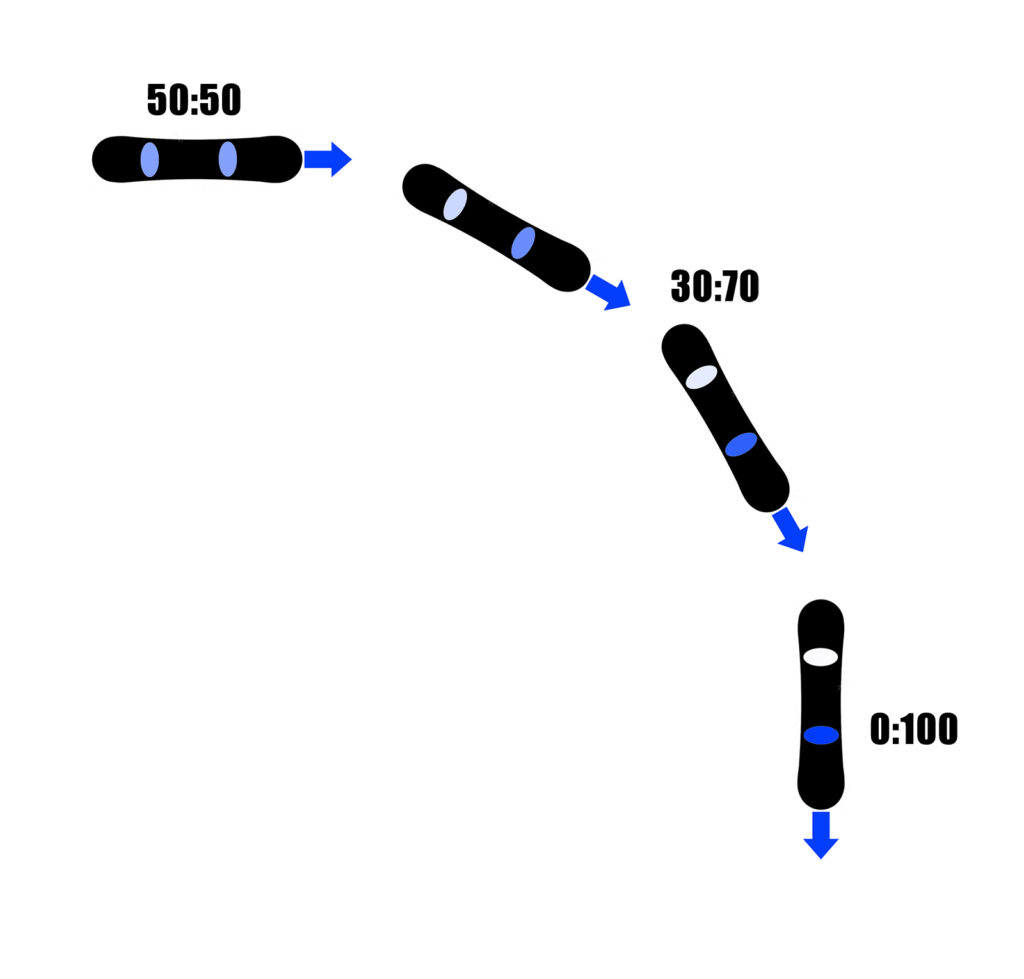
TIPS 1: Let’s make both of our shoulders align parallel to the slope!
Factors that prevent us from snowboarding down steep slopes up to this point → The movement required because most beginners are too scared to shift their weight towards the front legs → I have explained that you will actively ride on the front leg when your board is pointing downhill.
From now on, I will introduce two tips.
Now that you know the theory of sliding down a steep slope, the trick is to shift on your weight onto your front foot.
While understanding this concept in theory, the issue is that the body does not follow along.
What you need is a conscious effort to control your body well.
So first, let’s make the lines of both shoulders parallel to the slope! Let’s focus on that!
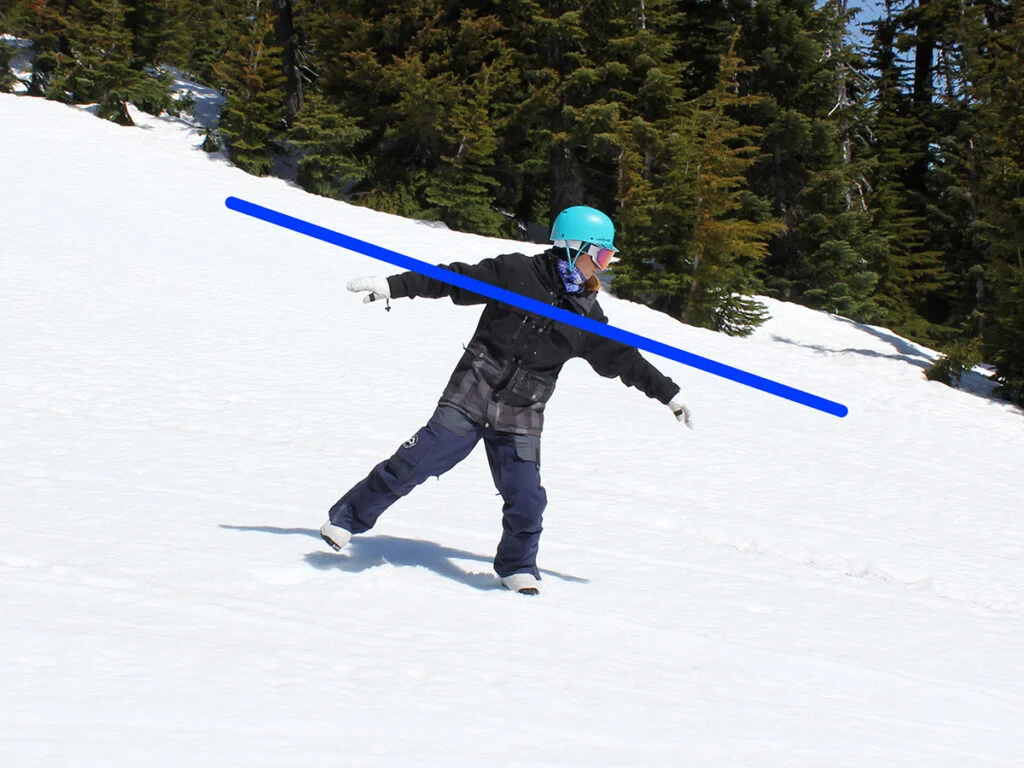
In fact, try standing on a steep slope and keep your shoulders parallel to the slope.
This can be on a slope you find somewhere in your neighborhood, not just on the snow.
If you try to keep your shoulders parallel to the slope, you can see that you are putting your weight on your forefoot.
As I mentioned earlier, the back legs are 0%: the front legs are 100%.
From there, close your eyes to remember that consciousness.
The feeling of shifting your weight on this front foot will increase.
I want you to take on the challenge to replicate the feeling of standing on a steep slope in snow.
TIPS 2: Learn to use leading movements to steer the forefoot
By listening to this, I think you understand that it is important to put your weight on your front legs.
The next piece of advice is to steer with your front legs. Therefore, I would like to recommend the action below.
I will explain in order.
First of all, steering is literally the direction of where you want to go.
It is the role of the front wheel in a car.
The car can drive freely from side to side because the front tires turn to the left and right. However, the rear wheels just follow the front wheels. It is the front wheels that determine the direction.
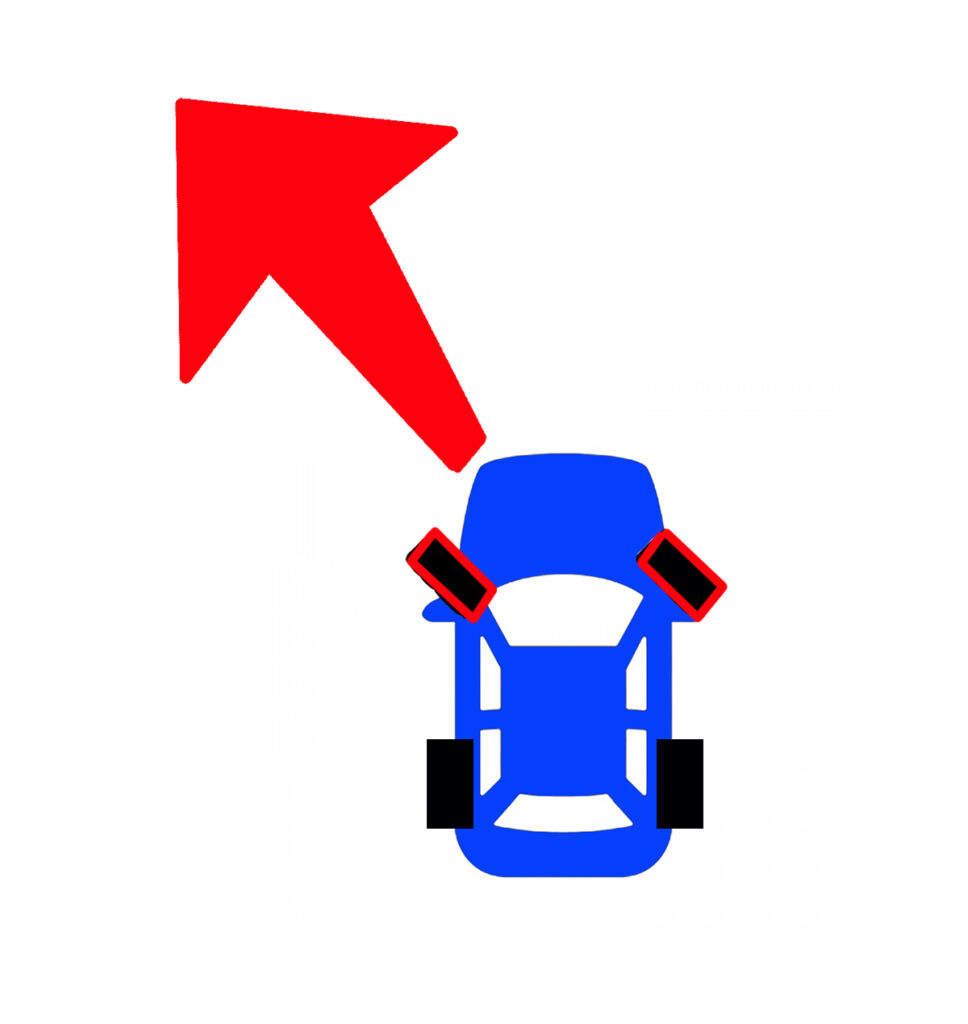
The same is true when snowboarding on steep slopes. All you have to do is orient yourself with your front legs and do nothing with your back legs as much as you can.
However, many people who are not good at steep slopes can’t do that and end up using their back legs to finish the turn.
This twisted posture of the upper and lower body is called a counter rotation turn.
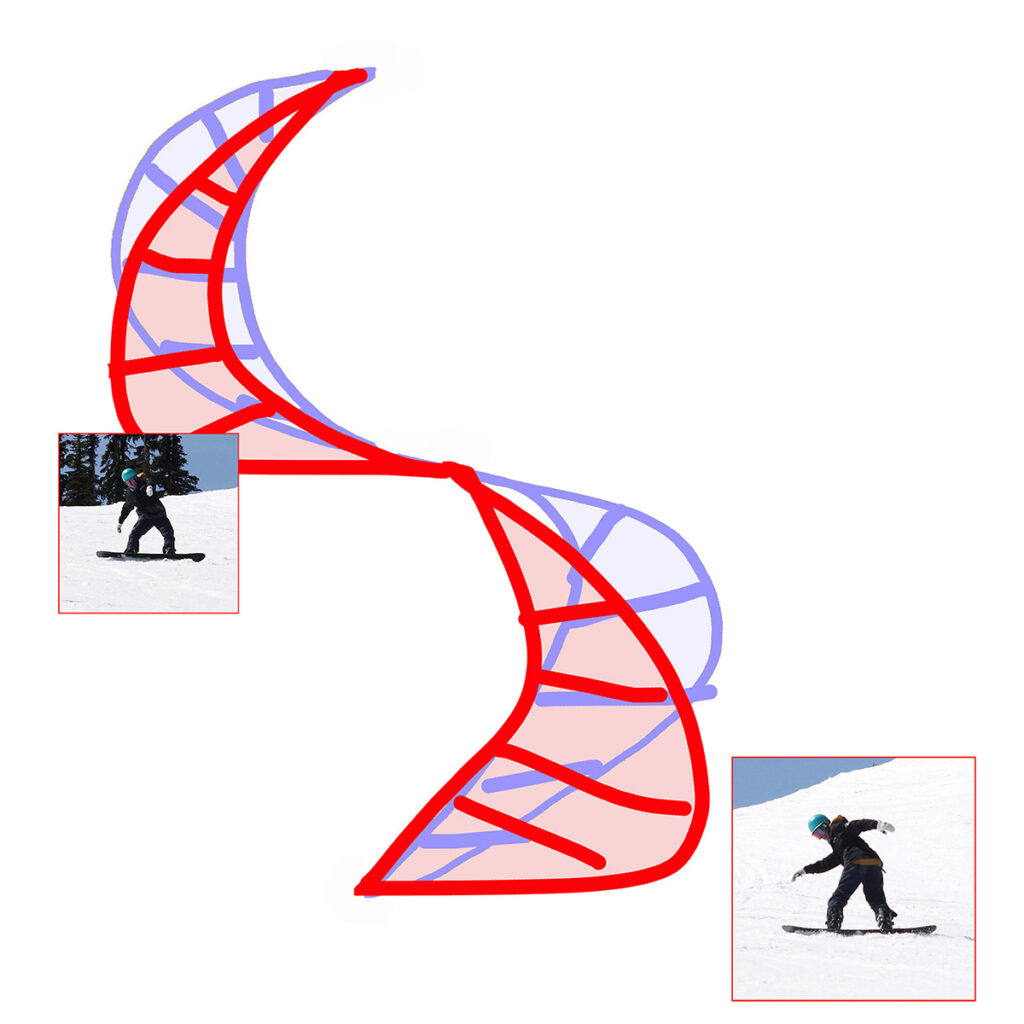
A counter rotation turn is not efficient because it twists your body sharply in the second half of the turn. Moreover, if you are unconsciously making such a turn, your weight will be put on your back leg when the nose of the board is down the fall line, and you will suddenly counter rotate at at the finishing stage of the turn, so it is very unstable. Even for myself, I have fallen into that “I don’t want to do these types of turns, but I end up with this kind of counter rotation turn.”
It is a characteristic of people who are not good at steep slopes.
(Note: In the future, the counter rotation turn can also be used when aggressively going through bumpy moguls. Here, the reverse twist turn I mean is because your body weight is on the back leg and I do not want to do it. It’s a situation where I’ve done it)
So how can this be resolved and the speed can be controlled by swinging the tail of the board from the start of the turn?
It is to steer with the front foot as the axis.
If you want to make a toe turn from standing on the heel side, bend your front ankle as soon as possible.
Also, if you want to go from the toe side to the heel side turn, pull up the toes of the front foot as soon as possible and orient the board.
This movement is similar to the movement of stepping on the accelerator of a car. In other words, you can control the board well by raising and lowering your front foot. In English-speaking lessons, this is a technique called “pedaling”.
However, even if you know it, you may not be able to operate the front foot like this.
Therefore, the action you want to add is the preceding action.
What is the preceding action?
Preceding action is to point a part of the body first in the direction the board is going. It’s like, “If your ankles don’t move the way you want, let another body part go first! “
It can be your eyes, your hips, your knees.
Let’s talk with a concrete example.
You are standing on a steep slope on your heel edge (heel side). From there, I want to turn to the toe side, but I’m afraid I can’t complete the turn.
Normally, by bending the front ankle quickly, you can put it in the toe edge, but it is a situation that you can not do it because you are scared.
So we will use the preceding action!
If you don’t have any speed, it’s difficult to get a chance to begin your turn, so let’s traverse sideways first. The speed at this time may be slow. I want you to use the edge as much as possible and traverse across the slope.
Next is the preceding operation. You are traversing sideways, but look at the clock hands from 12 o’clock to 3 o’clock, or even further. Furthermore, when the board starts to go straight downhill, let’s turn the upper body including the front hand toward 6 o’clock.
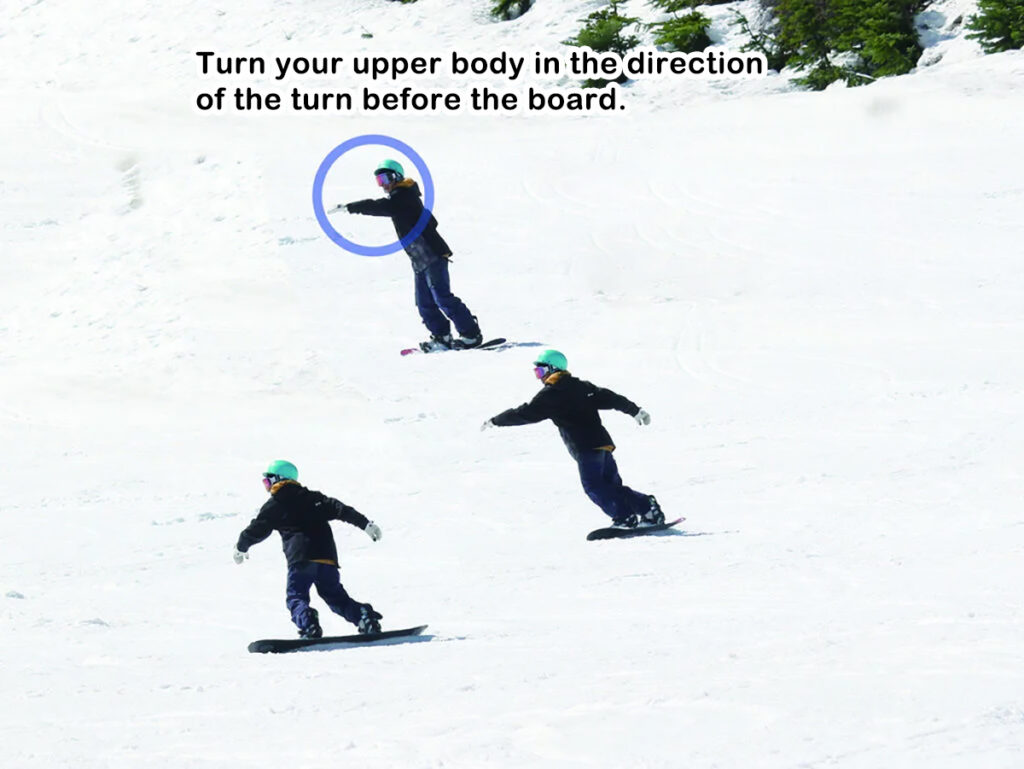
Turn your hips and front legs in the direction of the turn toward the second half of the turn.
Then, the weight will naturally be placed on the forefoot, the front foot will bend, and the turn will be completed smoothly.
This is the effect of the preceding action!

I want to orient the turn with my front legs. However, my body doesn’t move well. So, let’s use the preceding motion to orient the necessary front ankle bending!
Using your front shoulder or front arm to steer is a good way to practise making turns on steeper terrain.
By the way, an advanced snowboarder can use only the front ankle to start a turn without such a leading movement of the upper body.
In fact, in the Canadian method, these predecessors are negative, and many instructors give advice to “operate with just the ankle.”
However, if you can’t do it well, using the leading action of the upper body is a quick way to begin turning for now. In my years of lesson experience, this predecessor action is very effective.
I think that many people have experienced that when they were beginners, they were able to do well by using their eyes and hands in the direction of the turn they want to make. Let’s do the same thing on a steep slope that we are not good at.
By the way, this kind of leading motion is also effective when doing spin tricks in the future, and in the first spin trick, it will be easier to turn by using the leading motion of the upper body.
My advice here is, “What I’m not good at, it is OK is to use the preceding action. If it goes well, it’s okay to discard the preceding action!”
Last advice! What you can do to relax
If you practice what I have introduced so far, I’m sure you will be able to snowboard down steep slopes, but I would like to give you one last piece of advice.
It means that you want your body to relax before trying.
I mentioned at the beginning that people who are not good at steep slopes can get nervous just by standing there.
Even if you understand the theory behind going down steep slopes, you will still be nervous. If you are tense, your body will become stiff and prevent you from snowboarding well.
So, if you think “I’m nervous”, first look up at the sky. And I want you to take a deep breath slowly. Inhale through your nose and exhale for a long time through your mouth. Repeat this several times and shake your arms to relax your shoulders. Then, I think you can make yourself more relaxed.
Then all you have to do is test your learning consciousness here.
Even if you can’t make a perfect turn, if you can slide down on a steep slope to some extent, your fear will eventually turn into a feeling of excitement.
Then you are already graduating from this steep slope how-to content.
GOOD LUCK !!!
